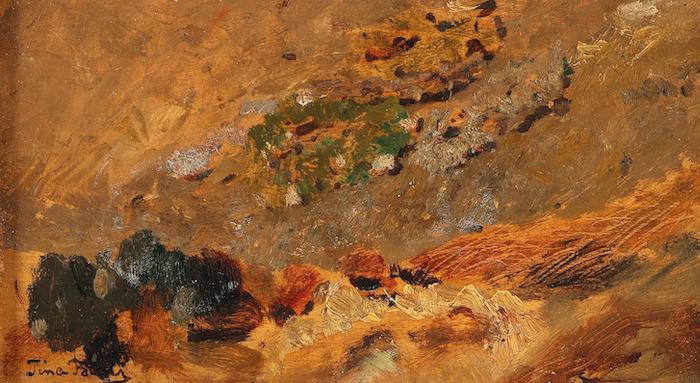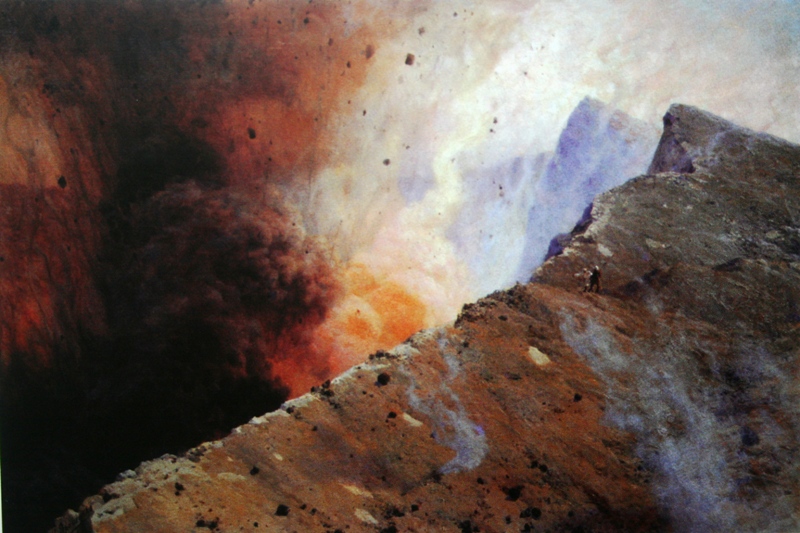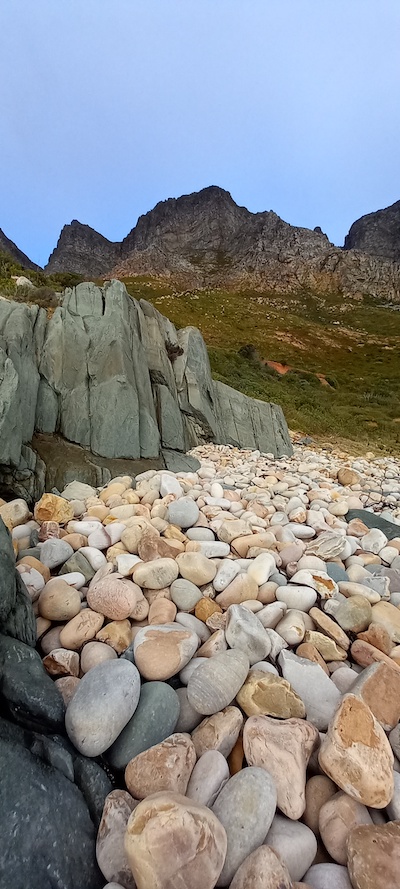John Roff (johnroff1@gmail.com) is a nature and geology guide, sharing the stories of South Africa’s remarkable biodiversity, rocks and landscapes. A lifelong student of nature, he describes himself as an open Christian nature mystic, and finds his heart’s home in Jesus Christ. (See Johnroff.co.za). Photographs by the author.

– Gregory of Nyssa
There are days when all I need is to stand on a huge outcrop of granite, to be dwarfed by the size of it, and to be there long enough to simply become aware of the presence of stone. I feel a kind of grounded healing in such places.
There are other days when I am comforted by carrying a small smooth stone in my pocket all day, and taking it out from time to time to feel its texture and temperature on my skin. There is some kind of primal kinship at work, the clay of my body and the firmness of stone in a subtle dance that mirrors the ongoing transformation of matter from one form into another.
Regularly I guide people to places where the story of the earth can be read in the rock formations and stones found there.
All this is really an ongoing study of the nature of God, mediated through personal experience, understanding and interpreting rocks and landscapes, biblical and other texts, and conversations with other people.
What is God like? In a way, I can no more answer this than a fish can discover the nature of water, yet life experience and an indefinable longing keep drawing me to a place of faith. I find the divine presence to be beyond understanding, yet knowable – endlessly understandable, in the words of Richard Rohr. Walking through the world and picking up stones, I find the big question being endlessly answered.
I find great beauty in rocks, stones and landscapes, not only in their immediate physical appearance, but also in their formation processes – the beautiful stories that they carry.
As a confirmed Anglican and practising Christian in my teens, who deliberately departed from that road at university, through eight years of a kind of homegrown zen atheism, I was drawn and keep being drawn back to faith by the question: “What is the purpose of beauty?”
My work as a nature and geology guide is to help people discover the wonder of the earth. Nearly all of it is rock – molten, solid, and all states in between – there’s an inexhaustible supply of stone to discover, study and wonder at. This interest may have started for me as a young boy marvelling at the play of light in my mother’s opal ring, reinforced by growing up in a place where there were stones lying about wherever I walked. Granite and banded ironstone hills in the landscape of my youth in Zimbabwe are made of different kinds of rock, in very different shapes; these are imprinted on my inner landscape, and are the places where my body fell in love with the earth.

Working with people of diverse backgrounds in beautiful natural places, discussions about origins inevitably emerge. I am as comfortable speaking about evolution as I am about creation; not as opposing ideologies but rather as deep stories and complementary lenses through which we attempt to make sense of the world.
I see the earth, and all that’s in, around and on it, as part of creation in process. Here, every place, thing and moment has a sacredness about it, and carries a subtle invitation. Jacob, at a place he later calls Beth El, has an encounter, and says “Surely the Lord was in this place and I did not know it.” In many other Hebrew texts, mountains and hills are places where YHWH is to be found and met with – holy places. Through this lens, and other lenses from various spiritual traditions, God may be encountered in every place, and every rock.
Seen with eyes of reverence, rocks can be a revelation – “places where the Holy touches us through experience,” in the words of Christine Valters Paintner.
Here are some of the ways this happens for me through geology, defined informally here as the study of the earth, what it’s made of, and what’s happening in and on it over time.
Let’s take a rock, any rock. Pick one nearby. It’s made of one or many minerals, it has texture, shape, colour, density, perhaps a smell. It came from somewhere, it was buried at one point, it was formed in some way. In short, it has a story.
What shape is the earth around you now? Please take the time to look and notice the contours of the earth where you live. They are like that for many reasons, and the underlying rock type is usually the main one.

The earth is fluid and changing. Over marvellously long periods of time, and through shorter cataclysmic events, the rocks move, shift, pour out, bend, break, melt, flow, ooze, collapse, weather, erode, and so on. These processes form tiny crystals of dazzling attractiveness, breathtaking landscapes, a bewildering array of thousands of minerals … Earth’s processes are a beauty-generating factory; a storehouse of stories.
Some rocks form patiently, layer upon slow layer, at the bottom of vast seas. Some are the deposits from a single storm event in mountains that have now vanished – records in stone of the immediacy of the event; others hold the shape of animals extinct for aeons.
Rocks become completely melted, stirred, boiled, cooked, partially solidified, poured out into the sea, cooled rapidly, and they ooze quietly between layers of other rock, cooling a bit more slowly. Some take so long to cool that they form huge crystals, kilometres below the surface.
All these rocks can be remelted, pushed upwards as mountains, plunged below continents, reformed, remelted, crushed, reformatted, buried, hidden and reworked. Says the writer in Psalm 104: “You renew the face of the earth.”

Purple Amethyst calls
coy within its angled crystal showcase,
Green Malachite murmurs,
bubble-stone deep-grown under-earth,
Pale Agate draws
me into concentric circling whorls of stone,
Hole-black Jet swallows
any colour daring to be lighter than its hunger,
Clear Diamond cleaves
the human heart as chisels cleave its own,
and Carborundum’s name
rolls in my mouth like a small hard sweet.
I tilt their cardboard cavern
and six turning pebbles tickle the air.
William Blake saw heaven in a grain of sand,
in a box of rocks, you might glimpse God.
In summary, I find rocks beautiful, their stories beguiling and their mysteries intriguing. They are to me an endless source of wonder, and portals to an ever-deepening revelation of Christ in creation.
The Kirby Laing Centre for Public Theology in Cambridge. Charity registered in England and Wales. Charity Number: 1191741
Kirby Laing Centre, The New Mill House, Unit 1, Chesterton Mill, French’s Road, Cambridge, CB4 3NP
© 2022 The Kirby Laing Centre for Public Theology in Cambridge